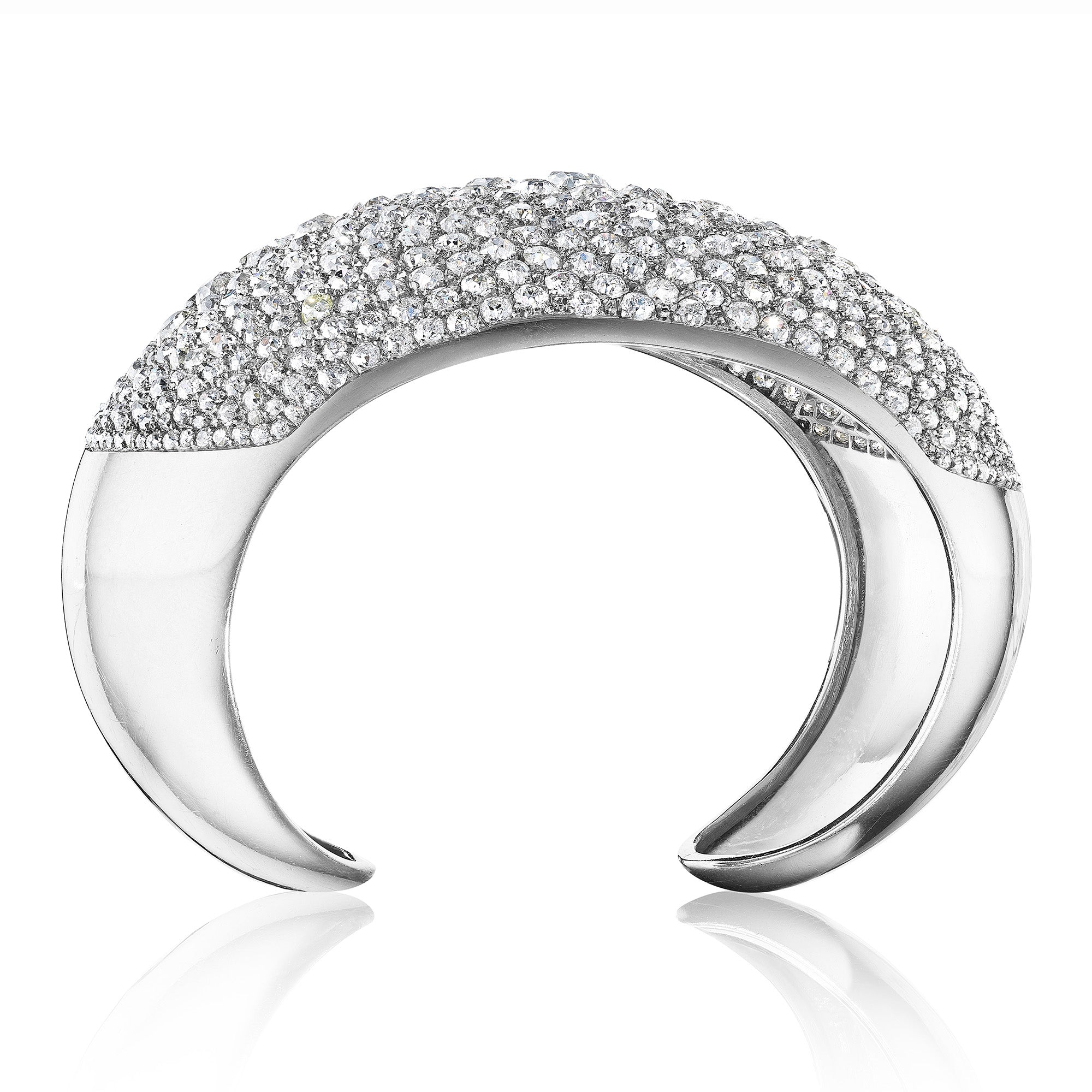PLATINUM AND DIAMOND “TRANCHE” BRACELET BY JULIETTE MOUTARD FOR RENÉ BOIVIN, PARIS, 1937
PLATINUM AND DIAMOND “TRANCHE” BRACELET BY JULIETTE MOUTARD FOR RENÉ BOIVIN, PARIS, 1937
A tapered cuff bracelet of melon slice design, pavé-set at the front with round and single-cut diamonds; mounted in platinum
- Round and single-cut diamonds
- Maker’s mark
- Measurements: 3 × 2 × 1 3/4 inches
Additional cataloguing
Certification
Certificate of Authenticity from Françoise Cailles, dated November, 24, 2015, stating that the diamond tranche bracelet is René Boivin, 1937, from a design by Juliette Moutard based on an idea from Jeanne Boivin.
Literature
cf: Cailles, Françoise. René Boivin: Jeweler. London: Quartet Books, 1994. p. 174.
Biography
René Boivin founded his company in the 1890s. After his death in 1917, his wife, Jeanne Boivin—the sister of fashion designer Paul Poiret—presided over the firm. Assisted by her daughter Germaine and designers Suzanne Belperron and Juliette Moutard, Jeanne oversaw production of some of the most inspired jewelry of the twentieth century. The house is known for pieces with a strong, sculptural style as well as designs based on nature. After Jeanne’s death in 1959, Germaine Boivin and Juliette Moutard ran the company until it was sold in the 1970s.
Significance
Beginning in the first quarter of the twentieth century, the Art Deco movement swept the world and quickly transformed the arts, society, and fashion. The modernist aesthetic strived for originality, geometry, and bold use of color and form. Major jewelry houses began to fill their stores with innovative and fresh designs. Maison René Boivin, run by Jeanne Boivin, created a distinctive style that was sculptural in design with rounded edges and bold curvaceous forms.
An iconic design, the Tranche, or melon-slice, cuff was inspired by a melon Boivin was eating. In 1932, Suzanne Belperron, who worked for Boivin from 1919 to 1932, translated Boivin’s idea into a jewel with her design drawings for a similar, thinner, variation on this bracelet. The design was instantly appreciated and a drawing of the bracelet appeared in Vogue in 1933. The Tranche was produced in a variety of materials, in each bracelet, the shape of the cuff with its round form and tapered sides represents a slice. In this bracelet, the top is set with diamonds of various sizes creating a surface reminiscent of the texture of the rind. It is unusual to see the Tranche in completely precious materials where subtle, but important, details show the artistry of the design. Here, the diamonds graduate in size, smaller at the edges and larger as they move toward the center of the cuff, creating a play of shadow and depth in the all-white piece. With the use of only diamonds and platinum, this cuff focuses on the brilliance and fire created by the array of diamonds set within a smooth platinum surface.
Boivin, Belperron, and Moutard were among an elite group of innovative designers who interpreted the changes occurring in fashion and decorative arts through jewelry design. The only woman to head a jewelry house in the Art Deco period, Jeanne Boivin combined her keen eye for fashion with the incredible talent of Suzanne Belperron and Juliette Moutard. This important cuff carries the signature style of great female designers and would look spectacular on any wrist.











